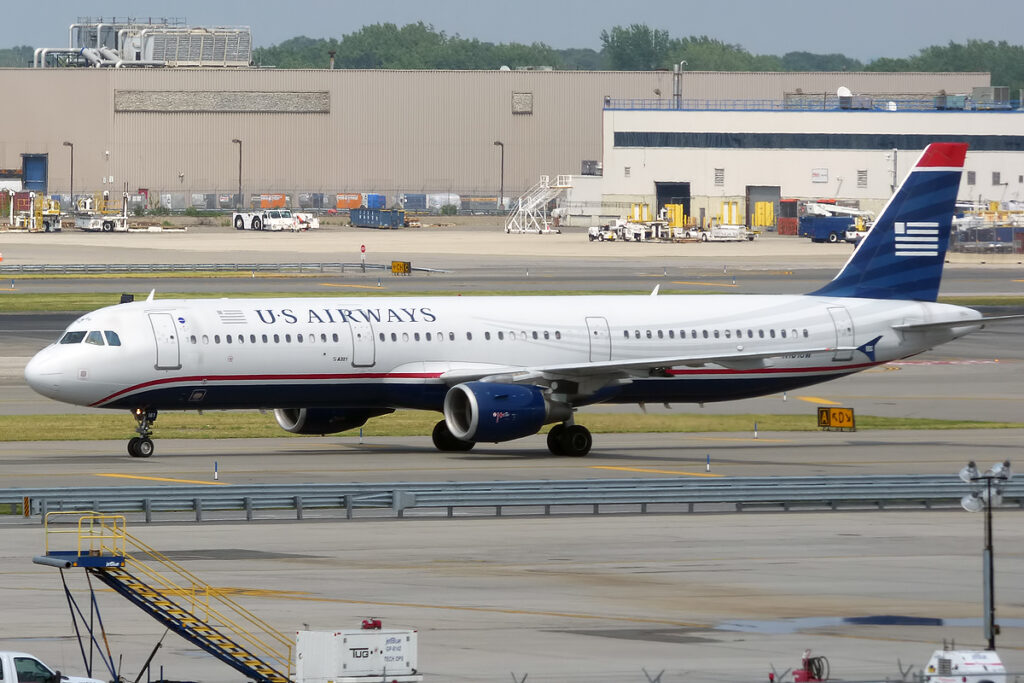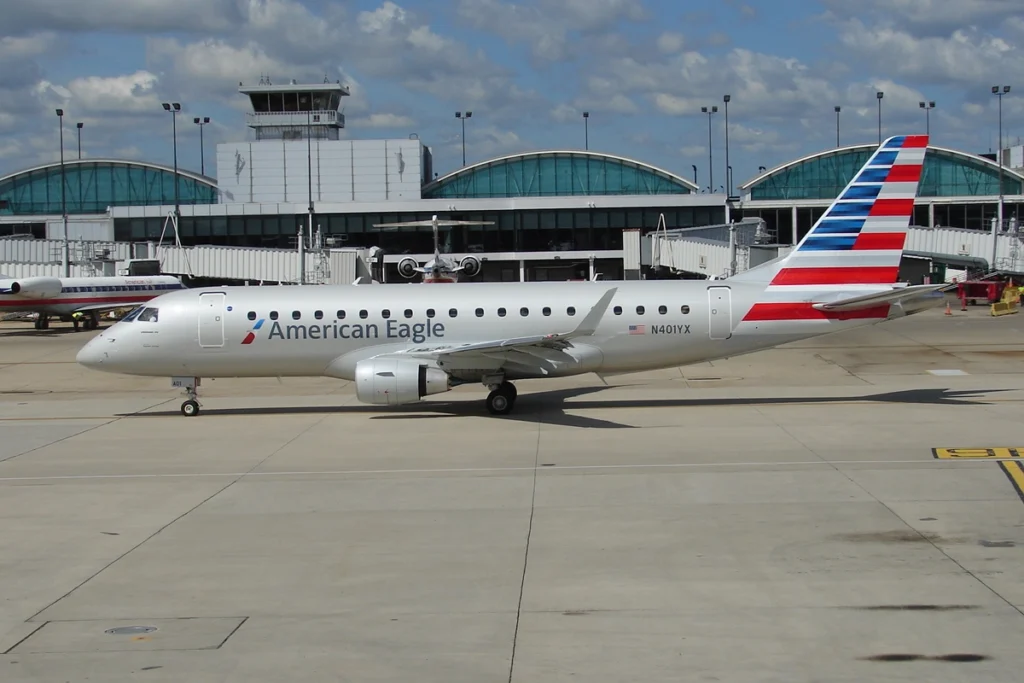
DENVER- An American Airlines (AA) Airbus A321 remains grounded at Tulsa International Airport (TUL) after a tug collision occurred prior to its departure from Denver International Airport (DEN).
The aircraft, operating as flight AAL790D, was en route to Tulsa for maintenance work when the incident took place. Despite the damage, the jet—registration N578UW—landed safely at TUL ahead of schedule.
 Photo: By Anna Zvereva – Flickr, CC BY-SA 2.0, https://commons.wikimedia.org/w/index.php?curid=40246063
Photo: By Anna Zvereva – Flickr, CC BY-SA 2.0, https://commons.wikimedia.org/w/index.php?curid=40246063American Airlines A321 Aircraft Collision
The incident began at Denver (DEN) when ground handling operations went awry. A tug vehicle struck the parked American Airlines (AA) A321 shortly before its scheduled departure to Tulsa (TUL) on June 25, 2025.
The aircraft was not carrying passengers and was being ferried to American’s primary Maintenance, Repair, and Overhaul (MRO) base for routine or corrective maintenance.
Meanwhile in Denver, worker tries to hide a baggage cart
N578UW, an American Airlines Airbus A321-231 was grounded on Wednesday after being damaged by a baggage cart. AA852 DEN-DFW was subsequently cancelled following the incident. pic.twitter.com/9g6bxEupVX
— Breaking Aviation News & Videos (@aviationbrk) June 26, 2025
Initial inspections at Denver determined that the damage was minor enough to allow a repositioning flight.
The aircraft departed DEN and landed safely in Tulsa nearly 15 minutes ahead of schedule. However, the collision raised operational concerns, as even small ground accidents can lead to substantial downtime and cost.
 Photo: By Anna Zvereva from Tallinn, Estonia – American Airlines, N106NN, Airbus A321-231, CC BY-SA 2.0, https://commons.wikimedia.org/w/index.php?curid=41995921
Photo: By Anna Zvereva from Tallinn, Estonia – American Airlines, N106NN, Airbus A321-231, CC BY-SA 2.0, https://commons.wikimedia.org/w/index.php?curid=41995921Human Error and Ramp Safety Challenges
Aircraft ground damage frequently stems from avoidable human error. Inadequate training, haste, and lapses in attention are among the top causes. Ground handling areas are high-risk zones where even minor misjudgments can result in serious delays and costly repairs.
Aircraft parts most vulnerable to such damage include the empennage, wing edges, and landing gear. Towing incidents are particularly notable for causing oversteering or exceeding structural limits. Some aircraft are equipped with limiters to mitigate such risks.
To prevent future incidents, best practices include slowing operational tempo, verifying clearances before movement, and conducting regular reviews of ground support equipment (GSE) procedures. Ongoing skill reinforcement for ground crews remains essential.
 Photo: By Cory W. Watts from Madison, Wisconsin, United States of America – brAAnd new E175 for AA, CC BY-SA 2.0, https://commons.wikimedia.org/w/index.php?curid=43511870
Photo: By Cory W. Watts from Madison, Wisconsin, United States of America – brAAnd new E175 for AA, CC BY-SA 2.0, https://commons.wikimedia.org/w/index.php?curid=43511870Embraer E175 Damaged
A catering vehicle operated by Sky Chef collided with an American Eagle (MQ) Embraer E175 at Boston Logan International Airport (BOS), resulting in visible aircraft damage and minor injuries to the driver.
The aircraft, operated by Republic Airways, had arrived the previous night from New York JFK Airport (JFK) and was unoccupied at the time of the incident. The jet was later towed for technical evaluation.
American Eagle/Republic Airways Embraer E175LR damaged after a ground vehicle collided with the aircraft at Boston’s Logan Airport over the weekend.
The crash occurred on Sunday morning when a catering minivan collided with a Republic Airways aircraft, according to a… pic.twitter.com/6xaqRsviRt
— Breaking Aviation News & Videos (@aviationbrk) June 30, 2025
Photos shared online show damage to the underside fuselage of the Embraer E175, raising concerns about potential breaches in the pressure hull.
Experts emphasize that any punctures must be fully assessed and repaired before the aircraft can safely return to service, as structural compromise could result in sudden decompression during flight.
The incident occurred on the ramp during routine ground handling operations. Fortunately, no passengers or crew were aboard, and the only injury reported was to the Sky Chef vehicle operator, who suffered minor wounds. The aircraft remains out of service pending a full inspection and structural integrity assessment.
Aircraft Fuselage Repairs Require Specialized Procedures
Fuselage repairs involve detailed, regulated processes. Maintenance teams use non-destructive testing techniques, including eddy current and ultrasonic inspections, to detect cracks or hidden structural damage. Stress analysis through Finite Element Analysis helps assess the material’s load-bearing capacity.
Aluminum components of the fuselage, typical of the Embraer E175, require welding and post-repair heat treatments. In contrast, composite materials—used increasingly in modern aircraft—require layered repairs with adhesives, curing processes, and environmental controls.
Only certified aviation technicians are authorized to conduct such repairs. All maintenance must comply with FAA regulations and manufacturer guidelines. Documentation, traceability, and inspections are central to aircraft return-to-service approval.
Stay tuned with us. Further, follow us on social media for the latest updates.
Join us on Telegram Group for the Latest Aviation Updates. Subsequently, follow us on Google News
American Airlines A321 Makes Emergency Landing in Las Vegas Amid Engine Fire
The post Two American Airlines Aircraft Damaged in Collision with Ground Vehicles appeared first on Aviation A2Z.
